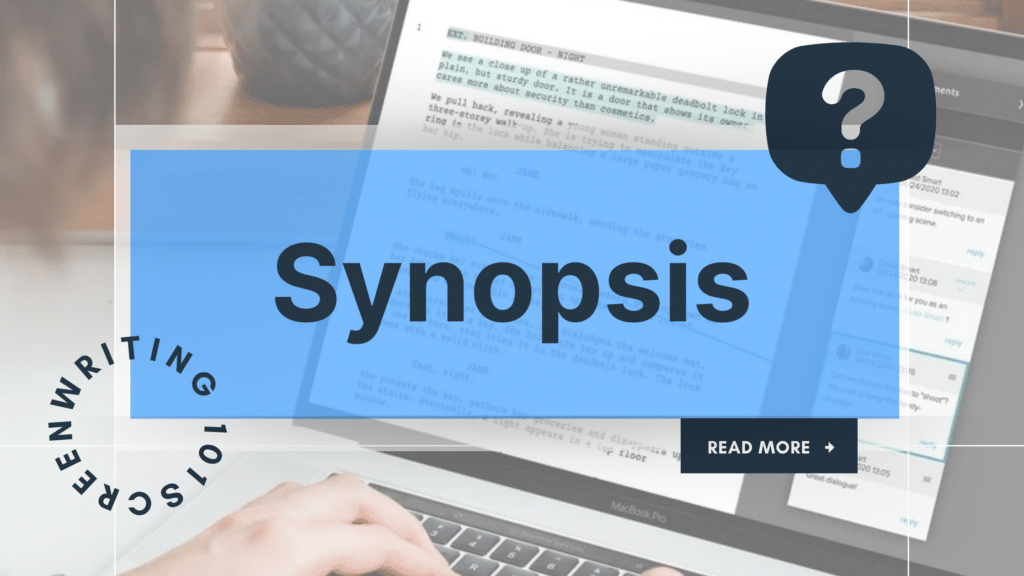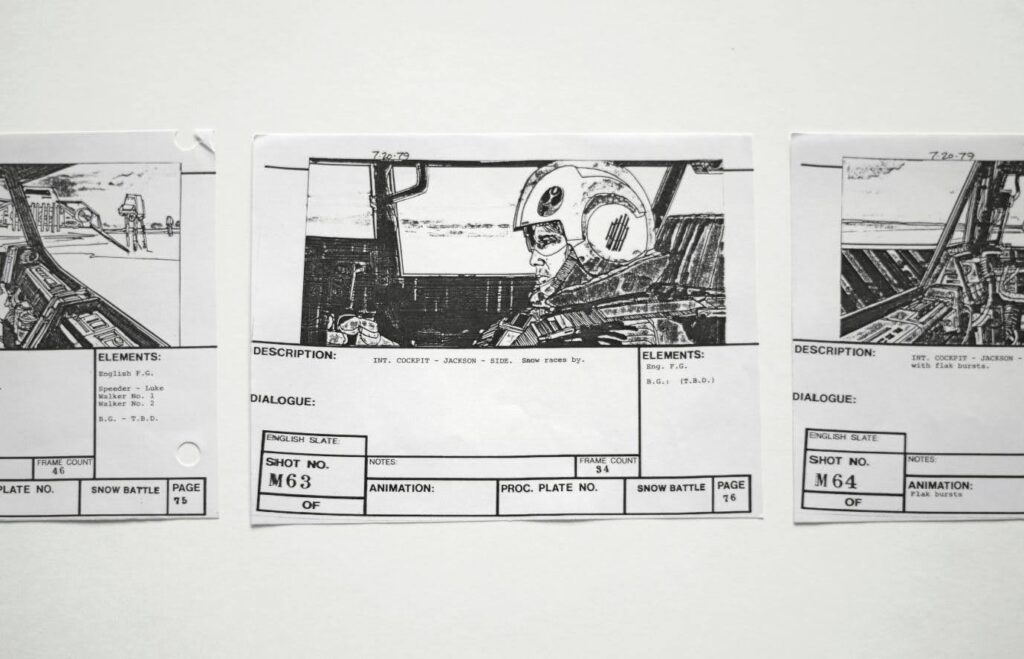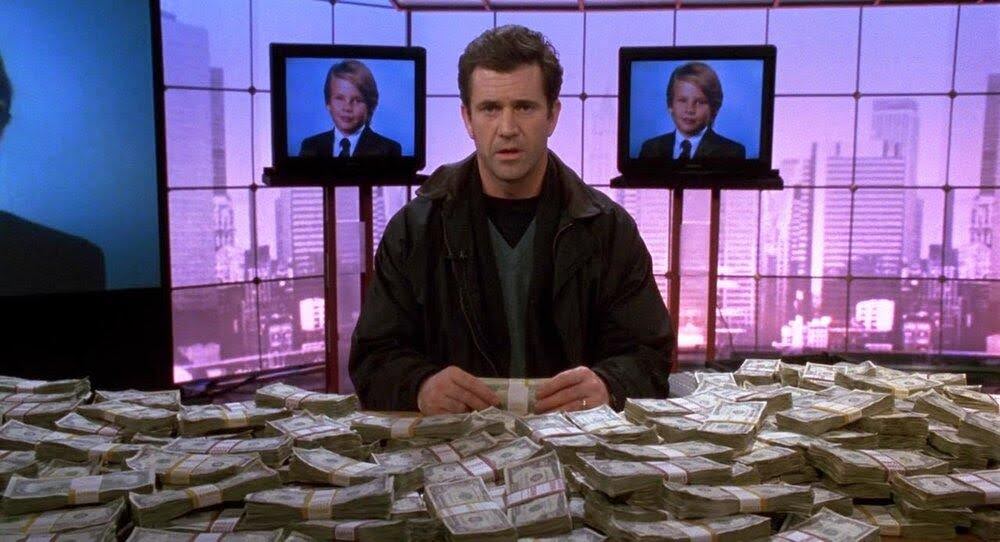
Introduction
A great screenplay is only as strong as its pitch. One of the crucial components of that pitch is the synopsis.
You could be pitching to a producer, entering a competition or seeking representation, but what all of these have in common is the need for a compelling and exciting synopsis. It could mean the difference between having your script read, or it being ignored completely.
Some may say that synopses are unnecessary, however we’d argue that a well-crafted one is a powerful tool in your screenwriting arsenal.
So, in today’s blog, we’ll explore why you need a synopsis, what makes one effective, and how you can craft your own killer synopsis that sells your screenplay and makes it shine!

What is a Synopsis?
To boil it down, a synopsis is a concise summary of your screenplay. Usually one to two pages in length, it outlines key characters, major plot points, and the central theme of the story. It should have a clear beginning, middle, and end.
Don’t confuse a synopsis with a logline (a single-sentence hook). Instead, your synopsis will give readers a broad, yet succinct and engaging overview of your screenplay. A good synopsis will focus on the structure and emotional beats without unnecessary detail.
Why Writers Need a Strong Synopsis (even though some people claim you don’t need one)
Some writers believe that synopses have simply become outdated or unnecessary, particularly in the age of spec scripts and increased digital networking.
Presenting Celtx’s argument as to why having a killer synopsis remains crucial (feel free to make up your own mind but hear us out first!).
Firstly, when you’re pitching to industry professionals, you’ll often find that producers, agents, and executives will request a synopsis before committing to reading a full screenplay.
Similarly, many screenplay contests will require a synopsis as part of their submission process.
Synopses can also be a powerful tool in your own writing process. It forces you to refine your plot and identify weaknesses before diving into your revisions.
Finally, when it comes to marketing your script, your synopsis could be essential for query letters, networking opportunities, and even creating a treatment for further development.
Even if some professionals claim they never read synopses, many others do. Having a synopsis for every single one of your projects could turn out to be a lifesaver if you find yourself spontaneously networking or receive an out-of-the-blue request for your screenplay. After all, it’s always better to be prepared, than not prepared at all!
Want to make sure your screenplay stands out?
Write, format, and collaborate in Celtx today.
Click here to start your free trial!

The Key Elements of a Great Synopsis
It’s all well and good us talking about writing ‘killer synopses’ but what actually goes into one?
The wait is finally over! Here are the key elements that a strong synopsis should include:
1. Title and Genre
Clearly states the title and the genre of the screenplay straight away.
2. Main Characters
The protagonist(s) and their primary goal or conflict within the story are introduced.
3. Inciting Incident
Details the event that kickstarts the action.
4. Major Plot Points
A summary of the key moments in the story, ensuring the script’s overall structure is clearly mapped out.
5. Climax and Resolution
Shows how the story builds to a climax and the resolution that is sparked from that.
6. Tone and Theme
Convey the emotional impact and underlying themes of your screenplay.
The key thing to remember here is to keep your synopsis engaging, informative and free of any fluff and waffle!
Step-by-Step Guide to Writing a Killer Synopsis
Now we know what you need to include in your synopsis, let’s run through how to put it together.
First, is the logline. Write a compelling one-sentence hook that encapsulates your screenplay.
Next, introduce your main character and the challenge they face. This sets you off on outlining the key plot points, namely the inciting incident, midpoint, climax, and finally, the resolution.

As you write, keep in mind that you need to maintain clarity and conciseness. Keep your sentences sharp and to the point. At this stage, avoid any unnecessary subplots or secondary characters that don’t feel into the main plot points.
Also remember to write in present tense to maintain immediacy and excitement, as though the reader is joining the characters on their journey. Your synopsis should be as compelling as the screenplay itself.
Just like when writing your screenplay, ensure to edit ruthlessly. Trim and refine your language to ensure maximum impact.
Seven Pitfalls and Mistakes to Avoid
As with everything creative, we’re all guilty of being too close to our work on occasion. It’s important to stay vigilant and keep an eye out for the all-too-common pitfalls when writing our synopses.
Pitfall #1 | Overloading with Details
It’s very easy to get carried away with including lots of detail, especially if you’re passionate about your story.
Make sure to keep your synopsis concise and focused on the main story. Avoid unnecessary subplots, excessive character descriptions, or minor details that do not drive the plot forward.
Pitfall #2 | Leaving Out the Ending
Although it may be tempting to leave your reader with an ambiguous ending to add to the excitement of the story, you should always reveal how your story concludes – the synopsis isn’t a teaser.
Instead, a synopsis should clearly showcase the resolution so industry professionals can assess the full arc of your story.
Pitfall #3 | Writing a Dry Summary
Infuse your synopsis with energy and emotion. Even though it’s a summary, it should reflect the tone and pacing of your screenplay. A synopsis that reads like a dull list of events will not engage the reader.
Pitfall #4 | Ignoring Theme and Tone
As you’re writing, make sure to keep your screenplay’s mood and thematic depth at the forefront of your mind. For example, if your story is a dark psychological thriller, a whimsical synopsis won’t do it justice.
Ensure the language and style align with the genre.
Pitfall #5 | Grammatical Errors and Typos
Proofread, proofread, and proofread again. A sloppy synopsis can hurst your credibility as writer and can make a screenplay look unpolished and unprofessional. You want your synopsis to make a strong impression!
Pitfall #6 | Making it Too Long
Industry professionals are often short on time, so keep your synopsis between one to two pages (a one-pager is best). Anything longer than two pages risks losing the reader’s interest.
Pitfall #7 | Being Vague or Too Generic
Avoid generic descriptions that lack specificity. For example, instead of saying “Harry faces a big challenge”, clarify what this challenge is and why it matters to Harry and the story.
Examples of Effective Synopses
Now we’ve explored how to build an effective synopsis and what elements you need to include, let’s take a look at some of the best examples of synopses.
Alongside writing your own work, you should always be reading scripts and supporting documents to get a real flavor of what works and what doesn’t. Of course, everyone will have differing opinions, but it’s crucial you get to know what resonates with you as being ‘successful’ in the film industry. To kick things off, we have Script Reader Pro’s synopsis of Damien Chazelle’s Whiplash. It’s a fine example on how to condense your story into an engaging and exciting summary. We’ve included the synopsis below, but make sure to go check out Script Reader Pro’s article and accompanying video for their take on writing the best possible synopses.
Whiplash
a feature screenplay synopsis
by Damien Chazelle
A promising young drummer enrolls at a cut-throat music conservatory where his dreams of greatness are mentored by an instructor who will stop at nothing to realize a student’s potential. Andrew Neiman, a young jazz student at the Shaffer Conservatory in New York, has one dream: to go down in history as one of the world’s best drummers. He’s therefore thrilled when Terence Fletcher, a famous conductor, invites him to join the conservatory’s Studio Band as a core alternate drummer. Fletcher, however, turns out to be anything but an ordinary teacher. He’s a sadistic tyrant and Andrew realizes just how much of one when he has a chair hurled at him for failing to keep time. At a jazz competition, Andrew misplaces the sheet music to “Whiplash,” meaning their core drummer can’t play. Andrew, however, can—from memory—and after a first class performance, Fletcher promotes him to core drummer. But Andrew’s joy won’t last long… In a typically twisted move, Fletcher bumps Andrew back down to alternate drummer, putting a much less talented musician in his place. More determined than ever, Andrew breaks up with his girlfriend and practices until his hands bleed. It pays off… After a grueling five-hour audition, during which Fletcher kicks furniture and screams at him, Andrew earns back the core spot. Andrew arrives late for another competition after his bus breaks down, hires a car, then realizes he left his drumsticks at the car rental office. He races back, retrieves them, but on his way to the theater, his car is broadsided by a semi. He crawls from the wreckage and runs the rest of the way, finally arriving on stage bloody and injured. When he struggles to play, Fletcher cooly dismisses him. Enraged, Andrew attacks Fletcher in front of the audience, which gets him dismissed from the school. Andrew files an ethics complaint against Shaffer Conservatory and learns that one of Fletcher’s former students hanged himself due to his emotional and physical abuse. Andrew agrees to testify as an anonymous witness and Fletcher is fired. Andrew gives up drumming and, months later, stumbles upon Fletcher playing piano in a jazz club. They go for a drink, during which Fletcher explains why he pushed his students so hard: so that they might become the next Charlie Parker. In Fletcher’s eyes the greats like Parker wouldn’t be discouraged by anything. He then invites Andrew to drum with his band at a jazz festival. Has Fletcher changed? Andrew thinks so, and accepts. On stage at the festival, Fletcher has two surprises for Andrew. One: he knows he testified against him, and two: they’re starting with a piece Andrew doesn’t know and for which there’s no sheet music. Unable to play, Andrew leaves the stage humiliated. But he returns, interrupts Fletcher and cues the band, before launching into a breathtaking solo. Fletcher is taken aback, but in that moment realizes the enormity of Andrew’s talent and begins to guide him. As Andrew ends his solo, they share a smile and Fletcher cues the finale.

Writer’s Digest’s synopsis for 1996’s Ransom is also one you should be paying attention to! Check it out here.

With snappy moves from one plot point to the next, both synopses for Ransom and Whiplash respectively, draw the reader in, leaving them wanting more.
Looking for a free Celtx download?
Get started with Celtx’s online script writing software today.
How Celtx Helps Writers Craft a Strong Synopsis
You guessed it! Celtx has a tool for that. Well, for writing synopses, that is. Our software offers you the best possible tools for crafting your next synopsis. Here’s how:
- Our pre-formatted templates including beat sheets and storyboards to help map out your synopsis.
- Collaborate with co-writers or receive feedback directly in-platform with our intuitive collaborative features.
- Our script breakdown tools, and catalog feature can identify key story elements and structure your synopsis effectively.
- Plus, our exclusively cloud-based software allows you to work on your synopsis anytime, anywhere. Neat, huh?
In short, Celtx is here to streamline the process and ensure your synopsis (and screenplay) is well-organized and to industry standards.
Conclusion
A killer synopsis is an essential tool for each and every screenwriter. It not only helps sell your script to industry professionals but also clarifies your story and strengthens your writing. By following a structured approach, avoiding common pitfalls, and utilizing helpful tools like Celtx, you can craft a compelling synopsis that grabs attention and elevates your screenplay.
So, the next time you’re tempted to skip writing a synopsis, remember it could be the key to getting your script noticed. Happy writing!
Enjoyed this article? Try these next:
- Finished Your Script? Here’s What to Do Next
- How to Sell a Screenplay | 10 Unique Tips and Strategies
- How to Write a Script: From Idea to Screenplay
